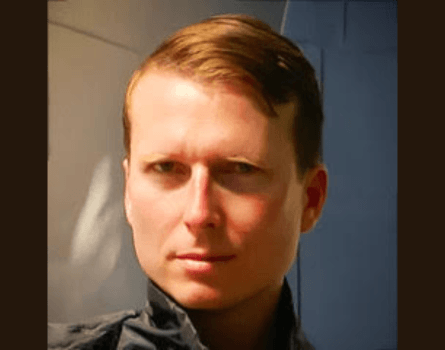Creator Spotlight with Industrial Designer Matthew Cunningham

This week we’d like to introduce you to industrial designer Matthew Cunningham. He’s widely known for his “expertise in advanced vehicle design, brand futuring, and feature film concept design.” Matthew is also one of the primary contributors to the document Structured Approaches for Fair and Ethical (SAFE) AI. Other primary contributors include Nicholas Papillon and Andrew MacLean.
What was the inspiration behind becoming a creator?
I believe everyone is creative to a greater or lesser extent depending on the subject at hand, and whether or not they devote intense, sustained focus toward perfecting or achieving a goal of “creativity.”
In retrospect, the deciding moment for me pursuing a career in the visual arts was probably when my older brother won a bicycle from a drawing he had created through a contest at the local convenience store. He was too large for the kid-size bike frame, so he gave it to me. I thought that it was pretty amazing that you could produce a drawing and trade it in for a bicycle. I was four or five at the time and didn’t know what a raffle was, which is how he actually won the bicycle.
What do you enjoy most about the creative process?
The deep meditative state, moments of insight, and the emergent nature of the creative act.
Can you talk through your creative process?
It depends on the medium, but generally it starts with a process of discovery and accumulation of ideas, thoughts, writings, images, and soundscapes, that serve as a bedrock for the development of a “solution” on paper or on the computer, that addresses the prescribed constraints that the project calls for, usually dictated by the medium of expression and the client. It then turns into a Goldilocks trial and error endeavor of refinement.
How long does your creative process take?
It really depends on the project. Vehicle design for feature films can take weeks or months depending on the type of prototype needed, but the key sketch that leads to the final object may only take a few minutes. Much of my work is conceptual in nature initially, and only later resulting in a physical object. That liminal window of development can either consist of hours, days, months, or in some cases years.
Does everything you produce make money?
Not necessarily, although after a very busy period with design professionally, I’ll focus on other forms of creative output that aren’t as lucrative ‘yet’ like writing, music, and fashion.
What do you think is the biggest misconception about your line of work?
That it’s glamorous working in Hollywood. It’s definitely more glamorous than working in Detroit, but Concept Artists typically have limited interaction with the fanfare associated with actors and directors.
When did you first become aware of copyright, and why?
That’s a tough question. I’d say it became glaringly obvious with the Napster controversy and subsequent lawsuits.
Have you experienced copyright infringement and, if so, how has it affected you personally and
financially?
Yes, I believe so. Some of the Advanced Automotive Design work I produced in post-graduate research has been “borrowed” extensively by a handful of car companies, rather glaringly. It’s reaffirming that your ideas have value, but disappointing to realize how unoriginal and deceptive some people in the “creative” industry can be at times, particularly when there’s money involved.
What do you do when you encounter someone stealing something you’ve invested your intellect, time, and money into?
First I look for my taser, but if I can’t find it, I’ll generally seek legal advice.
What is the best piece of advice that you would give other creators in your field about copyright and
how to protect themselves?
Learn as much as you can about copyright and be sure to have provisions in your contracts that clearly delineate ownership and usage.
What is your biggest copyright challenge?
Addressing the rampant larceny presented by AI and machine learning art generators and educating others regarding the same, an effort which started publicly with an appearance on the Dr. Phil show of all places. This effort includes not only informing the general public, but also educational institutions, labor unions, and government offices. Over the past several months, my team and I have put together a conceptual framework that suggests a technological solution to the misapplication of Generative AI systems, and subsequent mass intellectual property theft.
Having spoken extensively with numerous Congressional offices, the U.S. Copyright Office, the U.S. Patent and Trademark Office, the Federal Trade Commission, Congressional witnesses called upon for their expertise in licensing and the nature of Generative AI, and Dr. Phil, I’m happy to have drafted a document that posits a technological approach to protecting intellectual property. The title acronym SAFE AI was coined by one of the contributors to the paper, Andrew MacLean, and the document highlights a sound method of using WEB 3.0 technology, including Distributed Ledgers and Smart Contracts, to protect copyrighted material against rampant abuses perpetuated by a technology which is fundamentally corrosive to both culture and sound enterprise in its current incarnation.
If you aren’t already a member of the Copyright Alliance, you can join today by completing our Individual Creator Members membership form! Members gain access to monthly newsletters, educational webinars, and so much more — all for free!

